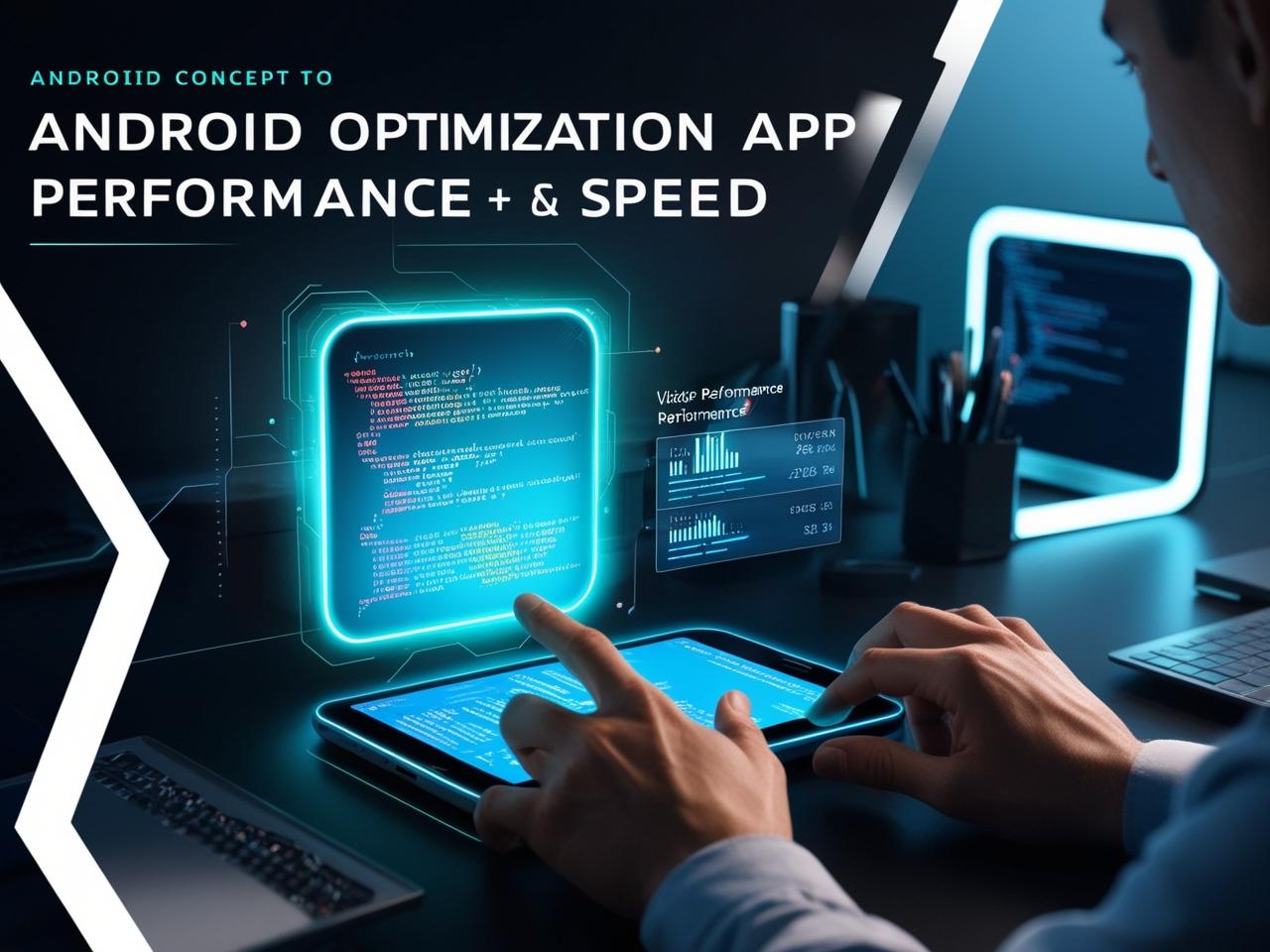How to Optimize Your Android App for Performance and Speed

According to a report by Statista, over 3.5 million Android apps are available on the Google Play Store as of 2024. However, 80% of users uninstall apps due to poor performance or lag. This underlines a critical aspect of mobile development: app performance directly affects user retention and ratings.
For any Android app development company, creating a fast and responsive application is essential. This article covers practical, technical strategies to optimize Android apps for better speed and performance. These methods ensure smoother user experience and better rankings in app stores.
- Use Efficient Layouts
UI rendering is one of the most resource-intensive processes in Android.
Tips to Optimize Layouts:
- Use ConstraintLayout instead of nested LinearLayouts.
- Avoid overdraw by keeping your UI hierarchy shallow.
- Reuse layouts with <include> and <merge> tags.
- Analyze layout performance using Layout Inspector in Android Studio.
| Layout Type | Performance Impact | Recommendation |
| LinearLayout | Moderate | Use sparingly |
| RelativeLayout | High | Use only when needed |
| ConstraintLayout | Optimal | Preferred layout type |
- Minimize Memory Usage
Memory leaks slow down apps and may lead to crashes.
Best Practices:
- Avoid keeping long-lived references to Activity or Context.
- Use WeakReference where appropriate.
- Always unregister listeners in onDestroy() or onPause().
- Use LeakCanary to detect and fix memory leaks during testing.
- Optimize Background Processes
Too many background tasks can drain CPU and battery.
Optimization Tips:
- Use WorkManager for deferrable background tasks.
- Avoid long-running services unless critical.
- Use JobScheduler or AlarmManager to schedule periodic tasks.
- Reduce polling intervals; use push notifications instead.
- Efficient Networking
Networking is a critical area where delays affect performance.
Techniques:
- Use libraries like Retrofit or Volley.
- Avoid unnecessary API calls.
- Cache responses locally using Room or SharedPreferences.
- Compress data using GZIP.
- Always run network operations on a background thread.
CoroutineScope(Dispatchers.IO).launch {
val response = apiService.getData()
withContext(Dispatchers.Main) {
updateUI(response)
}
}
- Optimize Images and Resources
Images are often the heaviest part of any mobile app.
Actionable Tips:
- Resize images before including them in the APK.
- Use WebP format for better compression.
- Load images efficiently using Glide or Picasso.
- Avoid memory leaks by clearing unused image caches.
- Use ProGuard and R8
Minifying and optimizing bytecode can significantly reduce APK size.
Steps:
- Enable minifyEnabled and shrinkResources in build.gradle:
buildTypes {
release {
minifyEnabled true
shrinkResources true
proguardFiles getDefaultProguardFile(‘proguard-android-optimize.txt.txt’), ‘proguard-rules.pro’
}
}
- Remove unused classes and methods.
- Obfuscate code to prevent reverse engineering.
- Profile and Monitor Performance
Regular profiling ensures that performance issues are identified early.
Tools:
- Android Profiler in Android Studio
- Systrace for tracing app execution
- Firebase Performance Monitoring for real-time insights
- Benchmark library to test startup times and frame drops
- Reduce App Startup Time
First impressions matter. Long load times result in user drop-offs.
Ways to Improve:
- Use Lazy Initialization for components not needed immediately.
- Avoid heavy operations in onCreate() of MainActivity.
- Display a lightweight splash screen while loading essential data.
- Use App Startup Library to defer component loading.
- Optimize Database Access
Slow database queries can freeze the UI thread.
Database Optimization Tips:
- Use Room with LiveData or Flow.
- Run all queries on a background thread.
- Index frequently accessed columns.
- Batch insert/update operations.
- Manage Threading Wisely
Improper threading causes janky UI and crashes.
Good Practices:
- Use Kotlin Coroutines or Executors for background tasks.
- Never update UI from a background thread.
- Keep main thread usage under 16ms/frame for 60 FPS rendering.
- Handle Permissions Carefully
Unnecessary permission prompts delay app usage and cause drop-offs.
Guidelines:
- Ask permissions only when required.
- Explain why the permission is needed.
- Handle permission denial gracefully.
- Reduce APK Size
Smaller APKs install faster and use less bandwidth.
Techniques:
- Use Android App Bundles (AAB).
- Remove unused resources.
- Compress assets.
- Enable resource shrinking.
- Split APKs by density and ABI.
- Test on Multiple Devices
Android runs on thousands of device combinations.
Testing Methods:
- Use Firebase Test Lab for cloud-based device testing.
- Maintain a physical test bench for popular models.
- Use emulators to simulate different network speeds and hardware configurations.
- Keep Your Codebase Clean
Technical debt slows down long-term performance.
Maintainability Tips:
- Follow SOLID principles.
- Avoid memory-heavy static contexts.
- Refactor regularly.
- Use lint tools to catch potential issues.
Summary Table: Performance Optimization Techniques
| Area | Optimization Strategy | Tools/Libraries Used |
| Layouts | Use ConstraintLayout | Layout Inspector |
| Memory | Avoid memory leaks | LeakCanary |
| Networking | Minimize API calls, use caching | Retrofit, OkHttp |
| Images | Compress and cache | Glide, Picasso |
| Startup | Lazy initialization | App Startup Library |
| Threading | Use background threads | Coroutines, Executors |
| Database | Use Room, avoid UI thread operations | Room, SQLite |
| APK Size | Use AAB, shrink resources | ProGuard, R8 |
Role of Android App Development Companies
A reliable Android app development company applies these optimization techniques from day one. They conduct detailed performance audits, use best-in-class tools, and test across various devices to ensure a seamless user experience. Businesses seeking long-term success should invest in such Android app development solutions to reduce churn and boost app ratings.
Final Thoughts
Optimizing an Android app for speed and performance requires a structured approach. From layout design to memory management and network efficiency, every decision impacts how fast and smooth the app feels.
Whether you’re an individual developer or part of a large Android app development company, applying these techniques will enhance user satisfaction and app longevity.
Focus on performance early and iterate frequently. That’s the real key to Android app success.
Need expert help optimizing your app? Consider Android app development solutions from experienced teams who prioritize performance at every stage of the lifecycle.







Leave a Comment